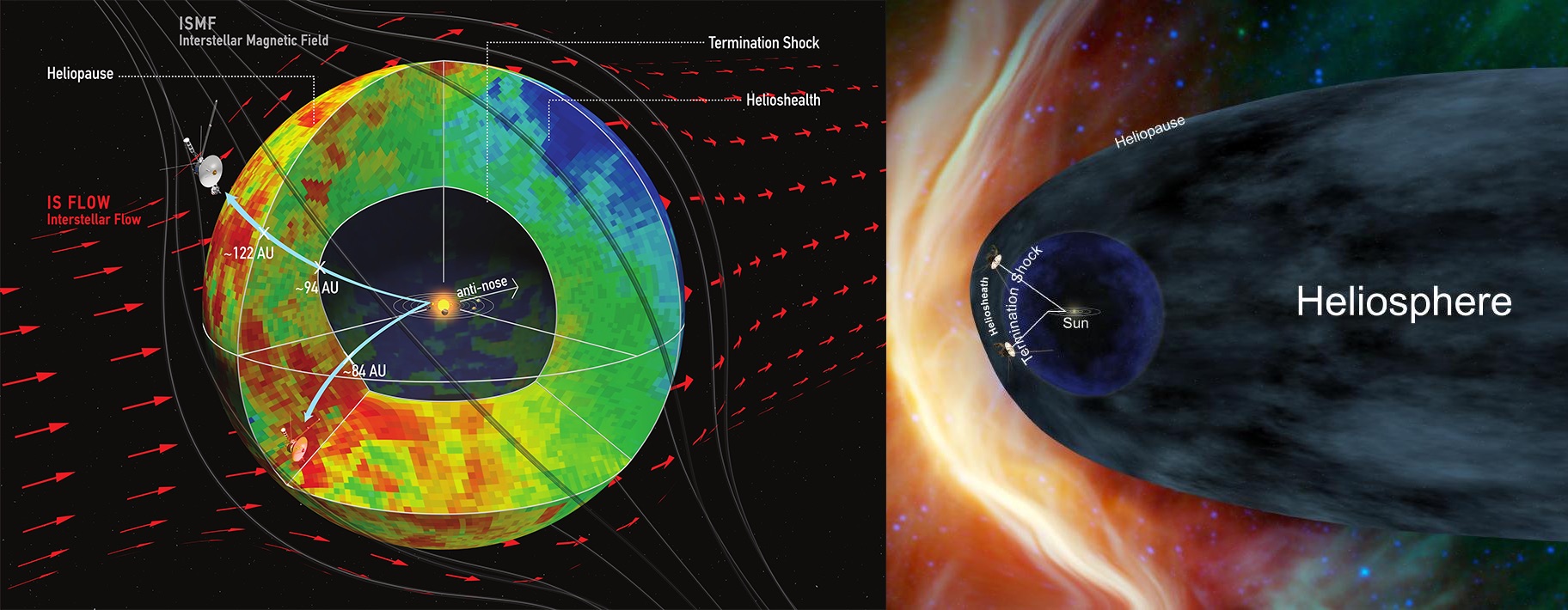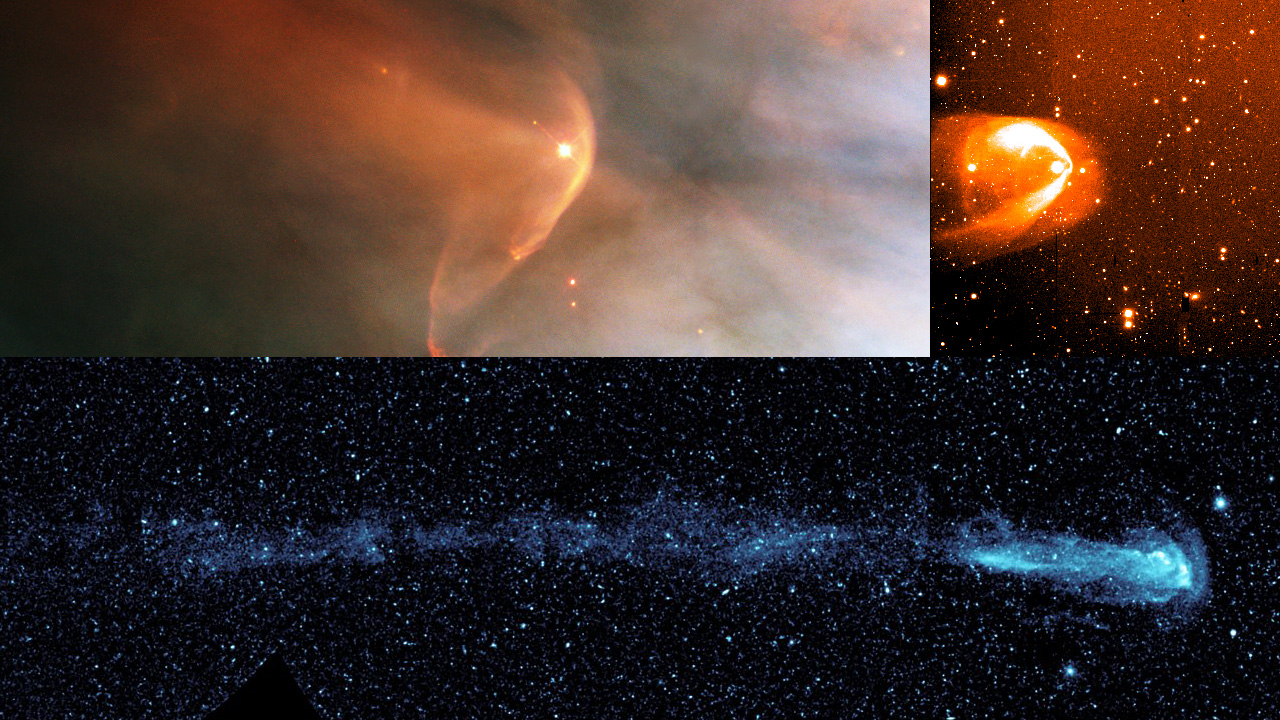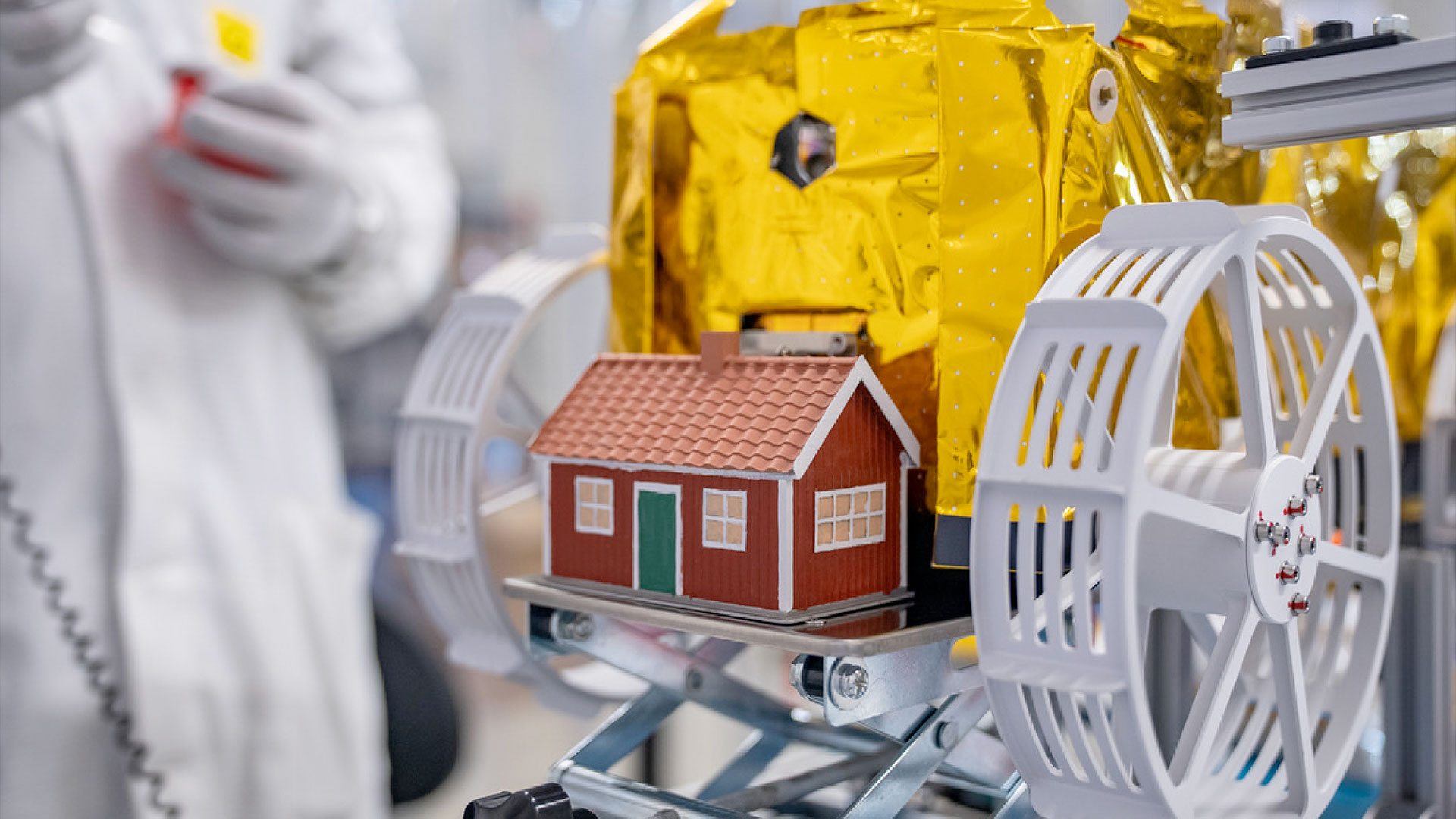Sun's Magnetic Shield May Be a Bubble, Not Comet-Shaped

The sun's magnetic "sphere of influence" that surrounds our solar system is shaped like a bubble, rather than having a long, comet-like tail as many scientists previously thought, new observations suggest.
The sun is constantly releasing energized particles, called the solar wind, which flow through the solar system out to well past Neptune's orbit. The solar wind and sun's extended magnetic field, together called the heliosphere, act as a protective bubble around the solar system and shield it from cosmic rays. The heliosphere stretches 23 billion miles (37 billion km) across, and the sun carries the whole assembly with it as it moves through interstellar space, NASA officials said in a statement.
Though previous work had suggested that a comet-like tail stretched out behind the solar system as it moved through interstellar space, the new work shows that the heliosphere might instead be rounded on both ends, whipped back into shape by the interstellar magnetic field. The study covers an entire 11-year solar activity cycle, when the sun's number of sunspots and solar storms increases and decreases, which impacts the strength of its solar wind. [How the Sun's Magnetic Field Works (Infographic)]
"Instead of a prolonged, comet-like tail, this rough bubble shape of the heliosphere is due to the strong interstellar magnetic field — much stronger than was anticipated in the past — combined with the fact that the ratio between particle pressure and magnetic pressure inside the [heliosphere's outer region, called the] heliosheath is high," Kostas Dialynas, a space scientist at the Academy of Athens in Greece and lead author of the study, said in the statement.
The new work combines data from NASA's Cassini mission, which is currently orbiting Saturn, with observations from the agency's Interstellar Boundary Explorer (IBEX), which detects particles that bounce back from the heliosphere's edge from an eccentric orbit above Earth. The researchers also incorporated data from the Voyager 1 spacecraft — the first and only human-made object to travel into interstellar space — and Voyager 2, which is on its way to being the second. Both spacecraft have already ventured into the heliosheath, the region near the heliosphere's outer edge where the solar wind is slowed and buffeted as it runs into the interstellar medium.
The researchers found that a particular instrument on Cassini, which had been intended to image ions trapped in Saturn's magnetosphere, was also able to pick up neutral particles that bounced back from the heliosphere's distant borders. When ions (charged particles) reach the edge of the heliosphere, they can exchange charge with the neutral gas atoms outside, and they will sometimes fly back inward as speedy neutral atoms, the researchers wrote — a mechanism IBEX previously used to investigate the heliosphere, as well.

Because the ions have to travel very far to reach the solar system's edge, it takes years for them to bounce back and return. Therefore, changes in the solar wind over the sun's 11-year cycle are reflected back after a long delay. Researchers compared the signals coming back, and found that particles reflected from both sides seemed to take only two or three years to return and that both sides matched the part of the solar cycle they reflected. This finding suggested that the tail and nose of the heliosphere are about the same distance away as each other.
Get the Space.com Newsletter
Breaking space news, the latest updates on rocket launches, skywatching events and more!
"If the heliosphere's tail is stretched out like a comet, we'd expect that the patterns of the solar cycle would show up much later in the measured neutral atoms," Tom Krimigis, a researcher at Johns Hopkins University who works on NASA's Voyager and Cassini missions and co-author of the new work, said in the statement. But no such long comet tail was found.
The rounded shape is surprising because researchers have seen other stars with comet-like tails streaking behind them, the researchers said in the statement. But in this case, perhaps the interstellar magnetic field is strong enough to push the sun's bubble back into shape, the researchers suggested.
"This data that Voyager 1 and 2, Cassini and IBEX provide to the scientific community is a windfall for studying the far reaches of the solar wind," Arik Posner, a Voyager and IBEX program scientist at NASA headquarters in Washington, D.C., said in the statement. (Posner was not involved in the study.) "As we continue to gather data from the edges of the heliosphere, this data will help us better understand the interstellar boundary that helps shield the Earth environment from harmful cosmic rays," Posner said.
The new work was detailed yesterday (April 24) in the journal Nature.
Email Sarah Lewin at slewin@space.com or follow her @SarahExplains. Follow us @Spacedotcom, Facebook and Google+. Original article on Space.com.
Join our Space Forums to keep talking space on the latest missions, night sky and more! And if you have a news tip, correction or comment, let us know at: community@space.com.

Sarah Lewin started writing for Space.com in June of 2015 as a Staff Writer and became Associate Editor in 2019 . Her work has been featured by Scientific American, IEEE Spectrum, Quanta Magazine, Wired, The Scientist, Science Friday and WGBH's Inside NOVA. Sarah has an MA from NYU's Science, Health and Environmental Reporting Program and an AB in mathematics from Brown University. When not writing, reading or thinking about space, Sarah enjoys musical theatre and mathematical papercraft. She is currently Assistant News Editor at Scientific American. You can follow her on Twitter @SarahExplains.
